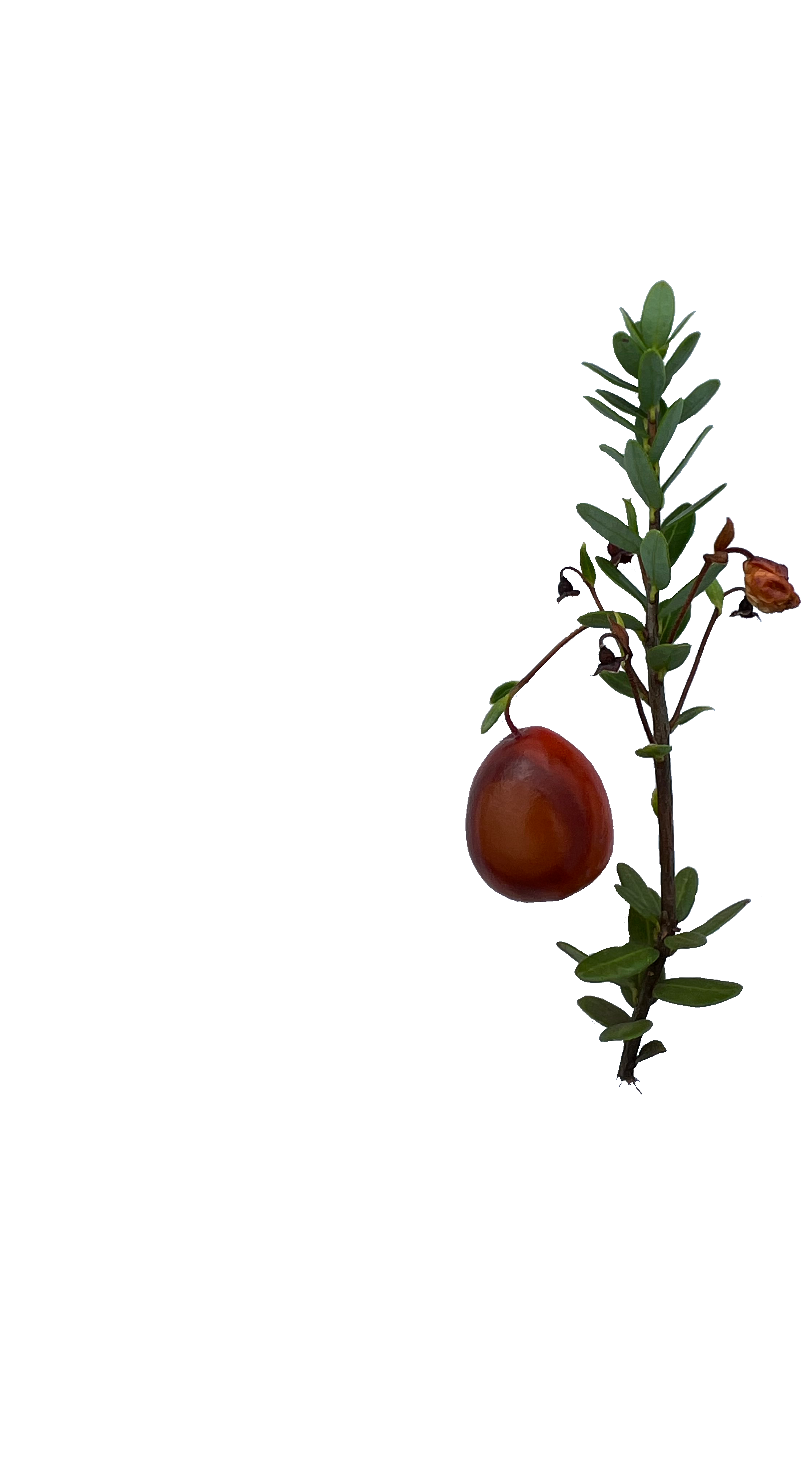The increased use of nitrogen (N) fertilizers over the past century has significantly enhanced agricultural production and contributed to global food security. Nevertheless, the improper use of nitrogen can severely damage air, water, and soil quality, leading to biodiversity loss and exacerbating climate change. It is unclear how fertilizer N application affects fruit rot incidence in cranberry production.
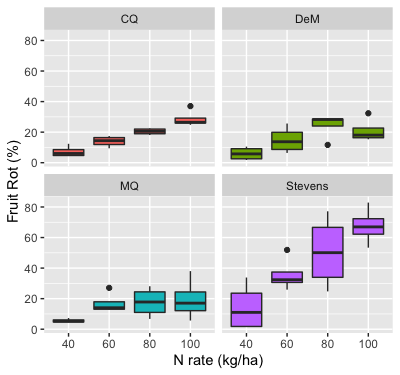
Cranberry originated from acidic and low fertile soils. Nitrogen is the most important element that influences both vegetative growth and fruiting in cranberry production. While many factors such as cultivar, age, and vigor of vines are important, soil fertility is one of the most important factors impacting yield and fruit quality. Nitrogen is an essential component of food constituents, particularly amino acids and proteins required for the growth of plants, animals, and humans. Optimizing cranberry production requires providing essential mineral nutrients in the correct amounts, forms, and at the right time. Nutrient management strategies should therefore be both flexible and environmentally sound.
Our goal was to determine the effect of nitrogen application rate on cranberry fruit rot. We set out to test whether nitrogen fertilizer provides increased substrate for microbial biomass and activity resulting in diverse microorganisms affecting fruit rot. In addition, external nitrogen may cause excessive cranberry canopy growth, thereby providing a conducive environment for high relative humidity (RH) that encourages fruit rot pathogens. To measure biophysical data, we deployed micro climatic sensors in each treatment. Previous work by Jeranyama unpublished showed high fruit rot incidence with increase in fertilizer N rate (Figure 1).
In the current study, we tested 40 lb N/acre and 100 lb N/acre levels of fertilizer N on cultivar ‘Stevens’ (ST) and ‘Mullica Queen’ (MQ). In this article we will show how the canopy relative humidity and canopy temperature were affected by fertilizer N rate in the two years in ‘Mullica Queen’ and ‘Stevens’ beds.
We found that the temperatures in MQ under 100 lb N/acre (Tmq100) and ST under 100 lb N/acre (Tst100) tended to be colder than MQ under 40 lb N/acre (Tmq40) and ST under 40 lb N/acre (Tst40) for both years, as depicted in Figure 2.
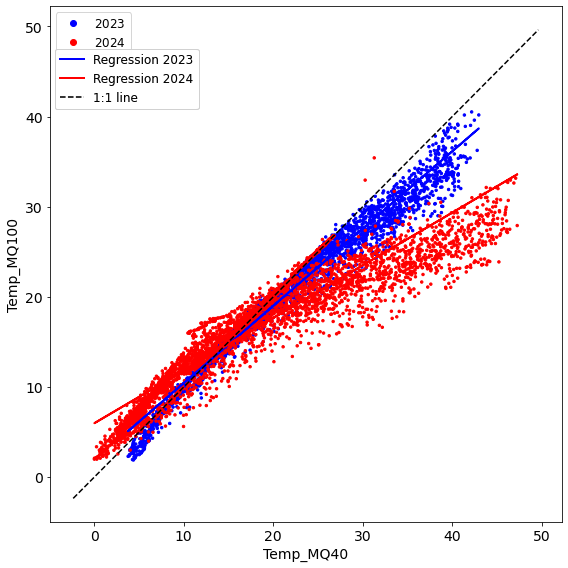
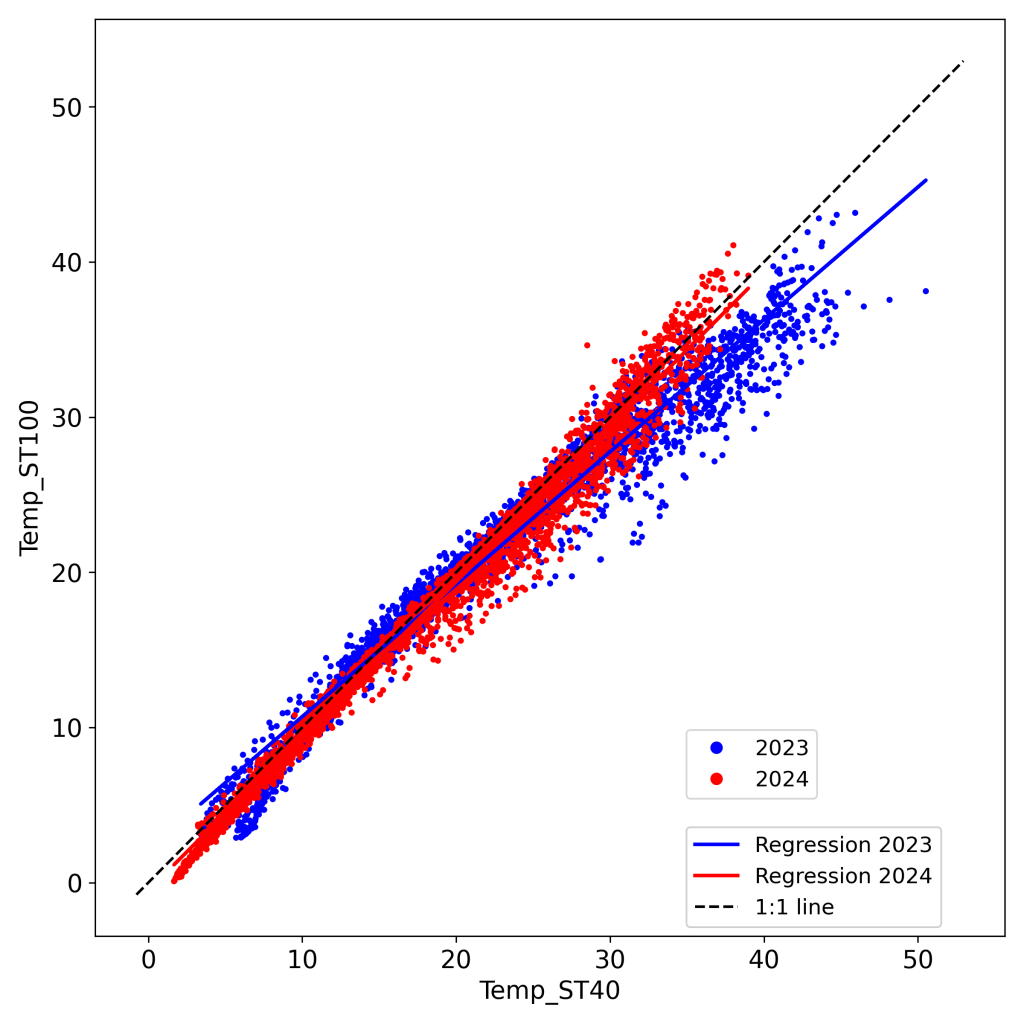
The majority of temperature points lie below the 1:1 line indicating that the 40 lb N/acre tend to be warmer being a more open canopy. Tmq100 was substantially cooler than Tmq40 in 2024 as compared to 2023, as indicated by steeper slope in the case of 2023 (closer to 1:1 line). Furthermore, the relative humidity under 100 lb N/acre tend to be greater than under 40 lb N/acre (Figure 3). Data points depicting RH data also shows that most points occur above the 1:1 line in the figure indicating that a lushy canopy produced by high N fertilizer application is associated with 100 lb N/acre has a tendency of keeping the canopy relatively humid. The conditions of moderately cool temperatures and high relative humidity at a higher N application are ideal for fungal pathogen and hence, higher fruit rot incidences. We have not yet isolated the fungal pathogens present and whether there is a difference in microbial populations and diversities under different fertilizer N regimes. Suffice to say that our data is pointing to a situation where a greater fruit rot incidence occurs under high fertilizer N application.
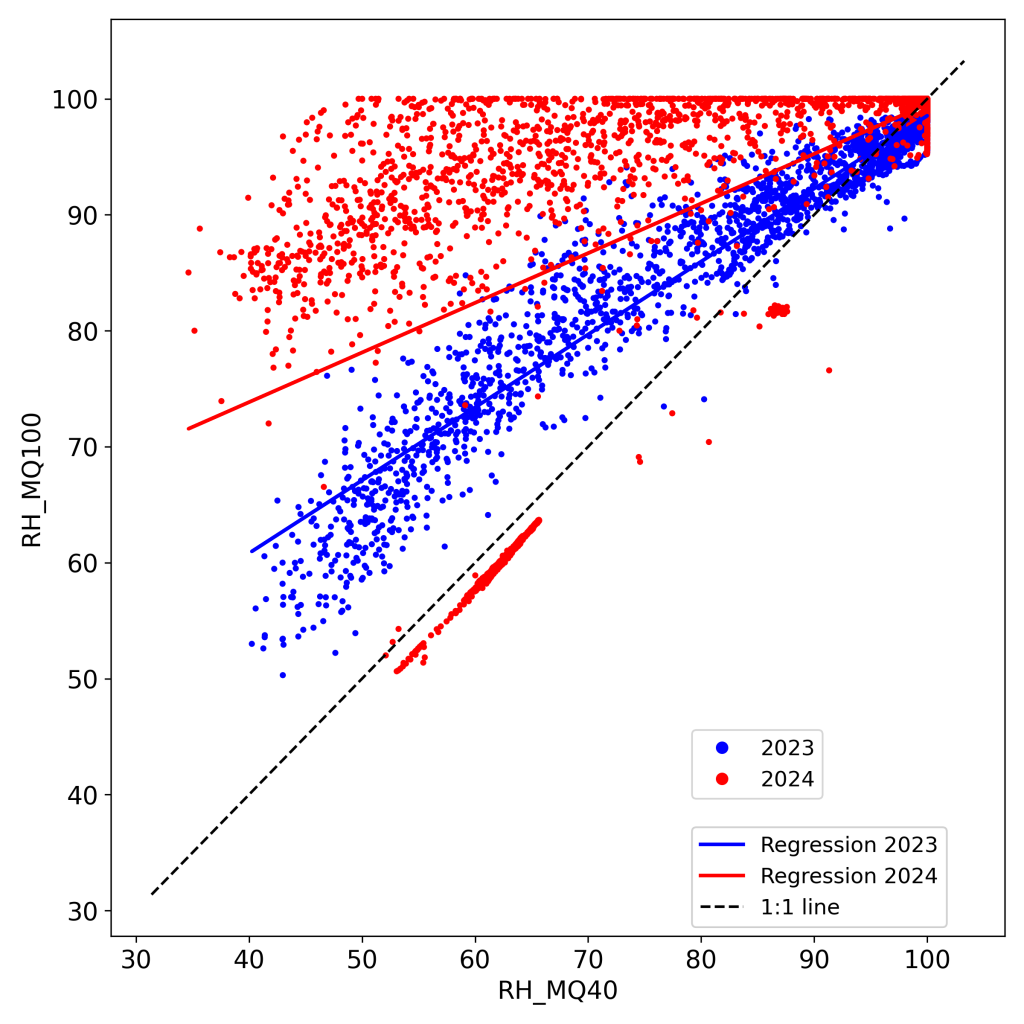
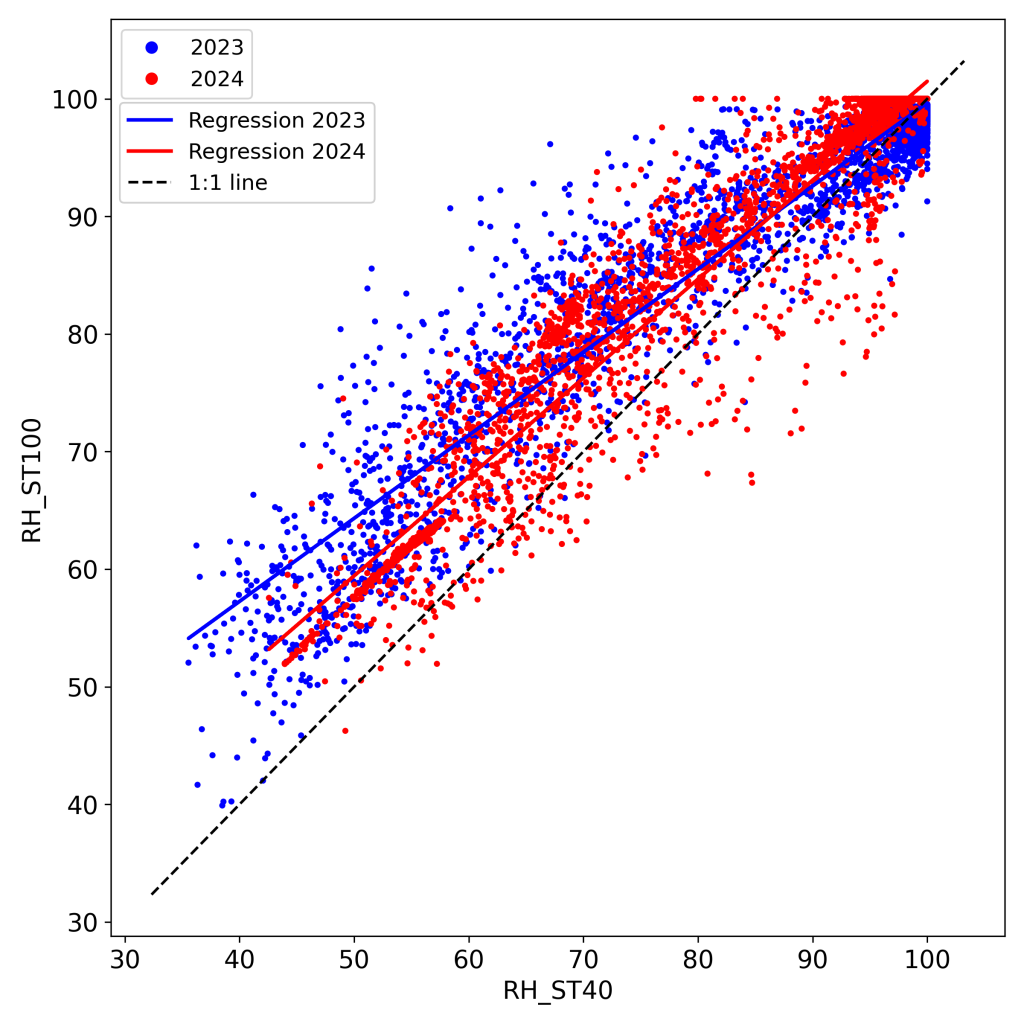
Article by Dr. Peter Jeranyama, University of Massachusetts Amherst
